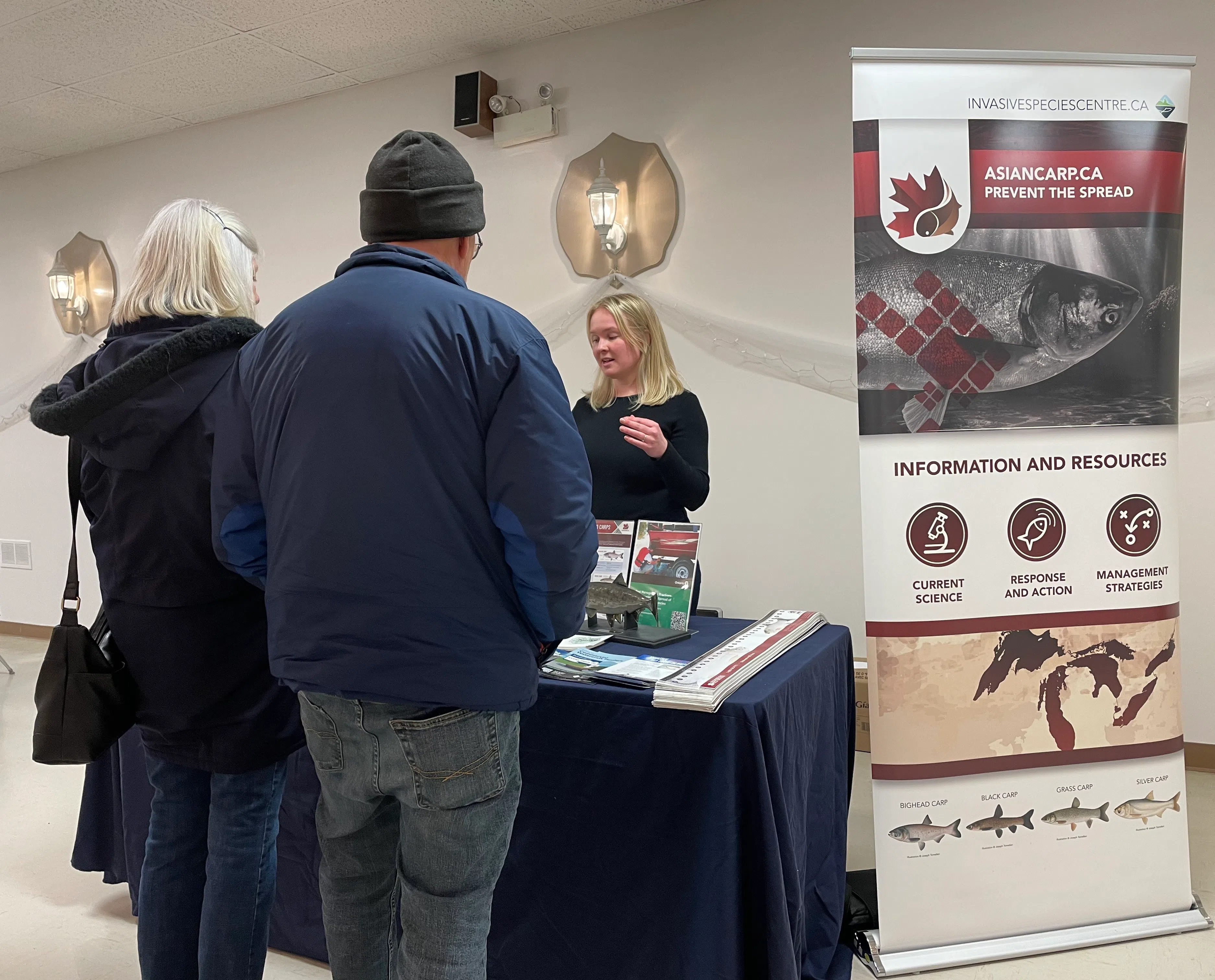The following was submitted by the Invasive Species Centre
In the summer of 2023, a fertile female Grass Carp was captured in the Bay of Quinte. Although there are no reproducing populations of Grass Carp in the Canadian waters of the Great Lakes, there have been rare captures of individual fish, making them an immediate threat. The Invasive Species Centre, through the Asian Carp Canada program, brought together a group of experts on invasive species, fisheries management, and angling during Invasive Species Awareness Week to discuss the threats of Grass Carp to the Canadian waters of the Great Lakes.
The event featured information booths from the Invasive Species Centre, the Federation of Cottagers Association, the Ontario Federation of Anglers and Hunters, the Department of Fisheries and Oceans Canada, the Ministry of Natural Resources and Forestry, Blue Fish Canada, and the Fish’n Canada Show. This session was followed by a presentation from Fisheries and Oceans Canada and a Q&A period with a panel of experts to both in-person and virtual viewers. Boaters, anglers, and Great Lakes enthusiasts were able to learn about Grass Carp and the effects their establishment would pose on the environment, economy, and society.
“Grass Carp threaten so many valuable assets that the Great Lakes have to offer. Commercial and recreational fisheries would see negative impacts along with boaters and other recreational water users. With a voracious appetite, Grass Carp have the potential to reduce wetland habitats that are crucial to Great Lakes ecosystems,” explains Liana Hryniewicz, Aquatic Program Coordinator at the Invasive Species Centre.
Researchers have found evidence of naturally reproducing populations of Grass Carp in the Sandusky and Maumee rivers, both tributaries of Lake Erie on the U.S. side. This puts them striking distance to the Canadian waters of the Great Lakes and makes them an immediate threat. Grass Carp can reduce wetland vegetation by up to 50% due to their ability to eat almost half of their body weight a day in aquatic weeds. This would cause high impacts to a predicted 33 fish species in the Great Lakes at including Walleye, Smallmouth Bass, Muskey, and others. The Canadian recreational fishing industry is valued at $556 million USD.
Asian Carp Canada, supported by Fisheries and Oceans Canada, is a resource for information and news regarding invasive carp developments in Canada. “Our website, asiancarp.ca, can connect you to the most recent information about prevention, early warning, reporting and response efforts. Visit www.asiancarp.ca for reporting information,” explains Hryniewicz. It is important to learn how to identify and report suspected sightings of invasive Grass Carp. You can find the Grass Carp identification and reporting guidelines at https://www.asiancarp.ca/grass-carp-identification-and-reporting-guide/.
Both aquatic and terrestrial invasive species have the ability to threaten Canada’s environment, economy, and society, including human health. Education, outreach, and prevention of establishment are the most cost-effective ways to reduce these impacts.






